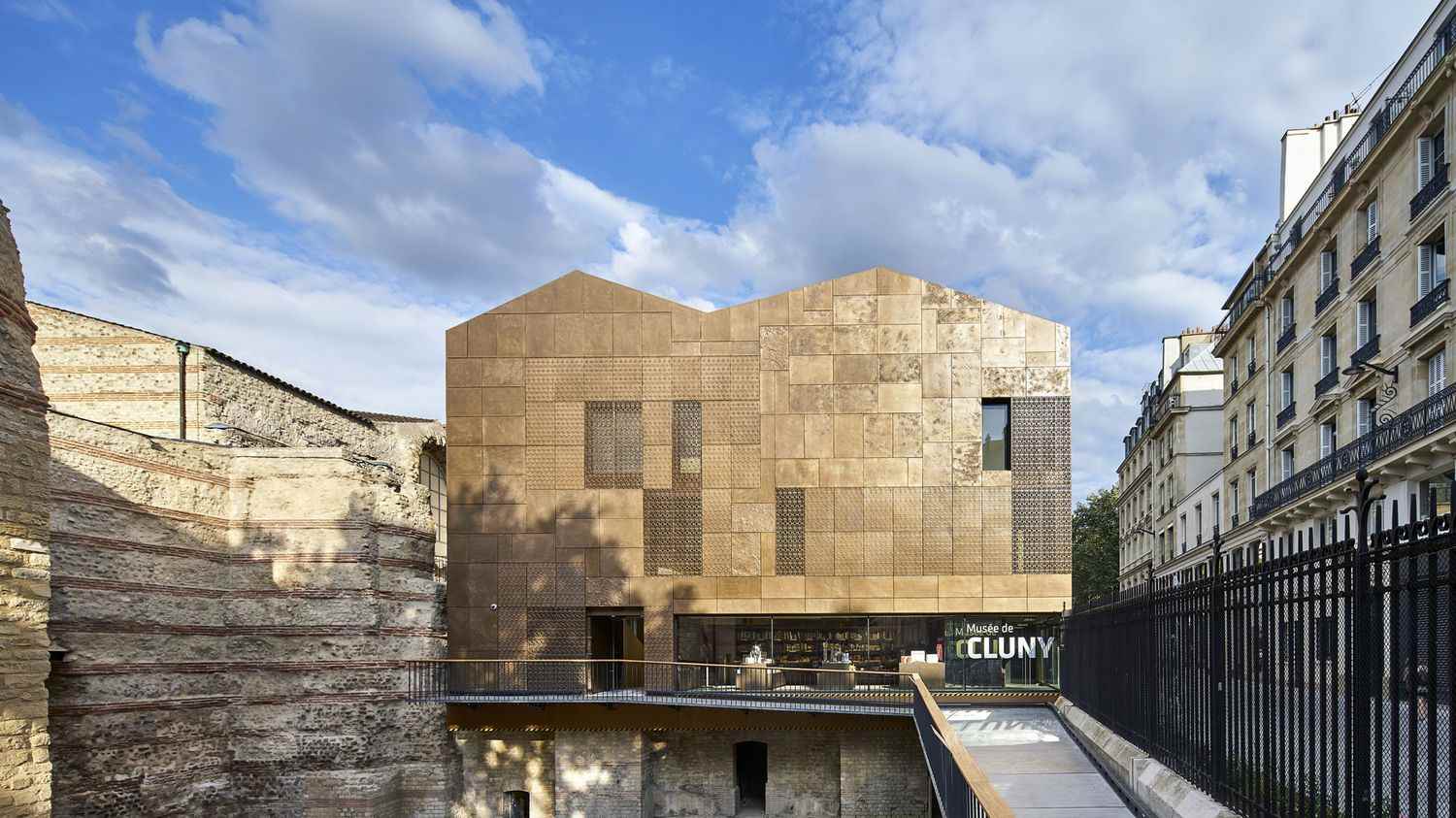Work on the Musée de Cluny – national museum of the Middle Ages, which began in 2011, has been completed. It fully reopens to the public on Thursday, May 12. Even if its director Séverine Lepape specifies that the roof should still be repaired and the facades cleaned, visitors will be able to discover a new museum itinerary in a building – or rather a set of buildings – restored and refurbished, clearer and more open.
The redesign and dusting off of the museum was not a luxury, it had not been the subject of a major renovation since the Second World War.

The first was to make the museum more accessible. A new building built against the historic parts, with a new public entrance, had already been inaugurated in 2018. Before, access was through the courtyard, from the side of the medieval hotel of the abbots of Cluny. It is now directly on rue du Sommerard, through a new entrance which makes it more visible. “It was the first important thing to do, to have a new reception that allows us to receive the public properly and to equip us with the infrastructures that we are entitled to expect from a museum of the 21st century”said the director.
The building designed by the architect Bernard Desmoulin, which we had therefore already been able to discover during temporary exhibitions, offers a vast reception area, changing rooms, an educational workshop and a bookstore. In place of the old entrance, a café has been installed which opens onto the courtyard.

The new part of the museum gives access to the beginning of the route, which begins with the frigidarium of the Roman baths of Cluny, acquired in the 1830s by the city of Paris which then decided to make it a “lapidary deposit”, where the fragments of ancient sculptures discovered in Paris. In the huge vaulted room you can admire Gallo-Roman votive pillars discovered in the 18th and 19th centuries, Gallic treasures of jewelry or gold coins and clothing clasps.
The museum route has been completely redesigned: “inherited from the 1950s”, it previously presented the museum’s collection -24,000 works or sets of works- according to the major creative techniques. It seemed wiser to the management to present them chronologically by major periods, even if thematic points can also be addressed.
It was a question of making the visit, which crosses 21 rooms, as fluid as possible. They are located first in the ancient part of the old thermal baths then in the medieval hotel, spaces often made up of multiple corners, and it’s quite successful. Cartels also explain to us the evolution of the buildings of the museum, opened in 1844. Two elevators now take you to the first floor or to the frigidarium, allowing people with reduced mobility to do the circuit almost identically to others.

A large golden altar from Basel or votive crowns from the Visigoth treasury of Guarrazar from the 8th century are some of the works that can be discovered before arriving in the large room dedicated to Our Lady. In it are exposed the remains of the exterior decorations of the cathedral, fragments of sculptures replaced at the time of the restoration by Viollet-le-Duc in the 19th century or torn off during the Revolution.
A small room is entirely devoted to the sublime champlevé enamels of Limoges (12th century), an art that has spread throughout Europe. Then we discover, among other things, the stained glass windows of Northern France. One room is devoted to the Sainte-Chapelle, a masterpiece of Gothic art (1241-1248), where stained glass windows and sculptures are brought together, deposited in Cluny during the renovation of the building in the 19th century.
A new staircase, coupled with an elevator, provides access to the first floor where visitors will discover Italian art from the 13th and 14th centuries, with in particular one of the exceptional golden roses offered by the pope every year to someone one for his piety.

We sail through the art of the 14th to 16th centuries in France and Europe, admire the restored Gothic chapel before continuing with more thematic sections (furniture, games, coins and measuring instruments, etc.). We will notice a very beautiful set of Hispano-Moorish luster ceramics presented in a gallery where openings have been pierced, bringing light and overlooking the sculptures of Notre-Dame located below.
The visit ends in the room of The Lady with the Unicorn who returned from Toulouse (while waiting for the reopening of the museum, she was exhibited for two and a half months at Les Abattoirs). No change here, since the famous set of tapestries from the end of the Middle Ages had been dusted off, hung on easels slightly tilted to avoid tensions and presented in this new room at the end of 2013.
Cluny Museum – museum of the Middle Ages
28 rue du Sommerard, 75005 Paris
Open every day from 9:30 a.m. to 6:15 p.m., except Mondays, December 25, January 1 and May 1. Nocturnes the first and third Thursdays of the month until 9 p.m.
Prices: €12 / €10
